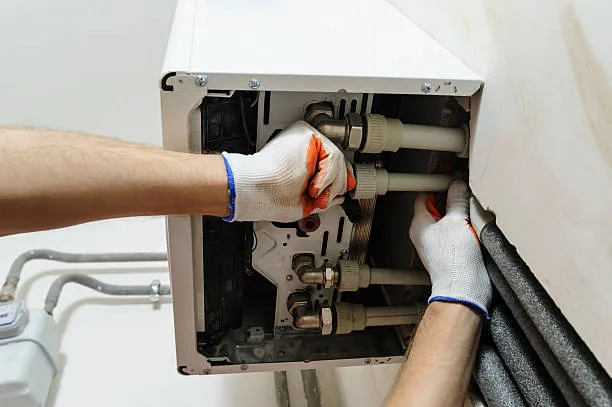Heating Installation in Roseville, CA
Installing a new heating system is one of the most impactful upgrades you can make for comfort, energy savings, and home value. In Roseville, CA, where winters are mild but nights can get chilly and air quality can be affected by regional smoke events, the right heating installation ensures even warmth, cleaner indoor air, and dependable operation when you need it most. This page explains the complete heating installation process in Roseville, CA — from load calculations and equipment selection to ductwork work, permitting, testing, and the maintenance needed to protect efficiency and warranty.
Common heating systems and installation types in Roseville
- Gas furnaces - Reliable for quick, strong heat during cold nights. Many older Roseville homes are already plumbed for natural gas which can simplify installation.
- Heat pumps - Highly efficient for Roseville’s climate. Modern heat pumps provide both heating and cooling and perform well during mild winters.
- Ductless mini-splits - Ideal for room additions, garages, or homes without ductwork. They deliver zoned comfort with minimal disruption.
- Hybrid systems - Combine a heat pump with a gas furnace to optimize efficiency and comfort when temperatures drop.
- Hydronic or radiant solutions - Used in specific installations for consistent, quiet warmth (basements, remodels, or high-end upgrades).
Each option has pros and cons depending on your home size, existing infrastructure, fuel availability, and comfort priorities.
How we determine the right system - load calculations and sizing
A correct heating system starts with a precise load calculation, not a rule-of-thumb based on square footage. A Manual J style heating load calculation considers:
- Insulation levels in walls and attic
- Window types and orientations
- Home layout, ceiling heights, and air leakage
- Local Roseville climate patterns and typical nighttime lows
- Number of occupants and internal heat gains from appliances
Proper sizing prevents short cycling, excessive energy use, and premature wear. Oversized equipment increases costs and reduces comfort; undersized equipment cannot maintain temperature on the coldest nights.
Equipment selection - what to consider
When choosing a heating system in Roseville, consider:
- Fuel type - natural gas, electric, or hybrid options
- Efficiency ratings - AFUE for furnaces, HSPF and SEER for heat pumps
- Operational profiles - single-stage, two-stage, or variable capacity (modulating) units
- Indoor air quality compatibility - filtration, ventilators, and UV options
- Thermostat and smart controls - zoning and scheduling for savings
- Warranty terms and required maintenance to keep warranties valid
Selecting the right unit balances upfront cost, long-term operating cost, comfort performance, and durability.
Ductwork evaluation and common modifications in Roseville homes
Ductwork age and condition directly affect system performance. Key duct issues found in many area homes:
- Leaks and disconnected seams causing lost conditioned air
- Undersized ducts limiting airflow and comfort
- Poor insulation in attic ducts increasing heat loss
- Imbalanced supply and return layouts causing hot/cold spots
Typical modifications during heating installation include duct sealing, adding return pathways, resizing or replacing trunk runs, insulating ducts in unconditioned spaces, and installing zoning dampers for room-by-room control.
Permitting and inspections
Heating installations require local building permits and inspections to ensure work meets safety and code standards. The permitting process generally includes:
- Submitting equipment and installation details to the local building department
- Inspections for gas lines, combustion venting, refrigerant work (if applicable), and final mechanical inspection
- Ensuring compliance with California energy standards and local ordinances
Proper permitting protects occupant safety, preserves manufacturer warranties, and simplifies future resale or inspection requirements.
Step-by-step installation process for heating system installation in Roseville, CA
- Site assessment and final plan confirmation - verify load calculation and equipment placement
- Preparation - protect floors, furniture, and landscaping; follow COVID-19 safety precautions during indoor work
- Removal of old equipment - safe disconnecting and disposal per local regulations
- Modify or replace ductwork and vents as needed - sealing and insulating where required
- Equipment installation - positioning the furnace, heat pump, or indoor units; installing lines, flues, and venting
- Gas and electrical hookups - performed by licensed technicians to code
- Refrigerant and condensate connections for heat pumps or mini-splits
- Pressure, leak, and safety testing - gas tightness, electrical checks, and combustion safety tests for gas units
- System startup and performance tuning - calibrate airflow, gas pressure, and control settings
Technicians should leave the work area clean and restore any access panels or covers.
Post-installation testing and homeowner orientation
After installation, expect comprehensive testing and a walkthrough:
- Operational verification under load conditions
- Combustion analysis and carbon monoxide safety checks for gas systems
- Airflow measurements and temperature split checks
- Demonstration of thermostat functions, zoning controls, and filter replacement
- Documentation of equipment specifications, serial numbers, and warranty registration instructions
Homeowner orientation ensures you know how to run the system efficiently and understand basic troubleshooting.
Recommended maintenance to preserve warranty and efficiency
To keep your new heating system performing and to protect warranty coverage, follow manufacturer maintenance guidelines:
- Replace or clean filters every 1-3 months depending on use and filter type
- Schedule an annual tune-up for burners, heat exchanger inspection, refrigerant and coil cleaning, and electrical checks
- Keep outdoor units clear of debris and vegetation
- Monitor ductwork and vents for obstruction or damage
- Record maintenance visits and keep copies of service logs for warranty claims
Regular maintenance improves efficiency, extends equipment life, and reduces the chance of mid-winter failures.
Other Services
Customer Testimonials
See what our satisfied customers have to say about their experience with Always Affordable
Plumbing & HVAC.






